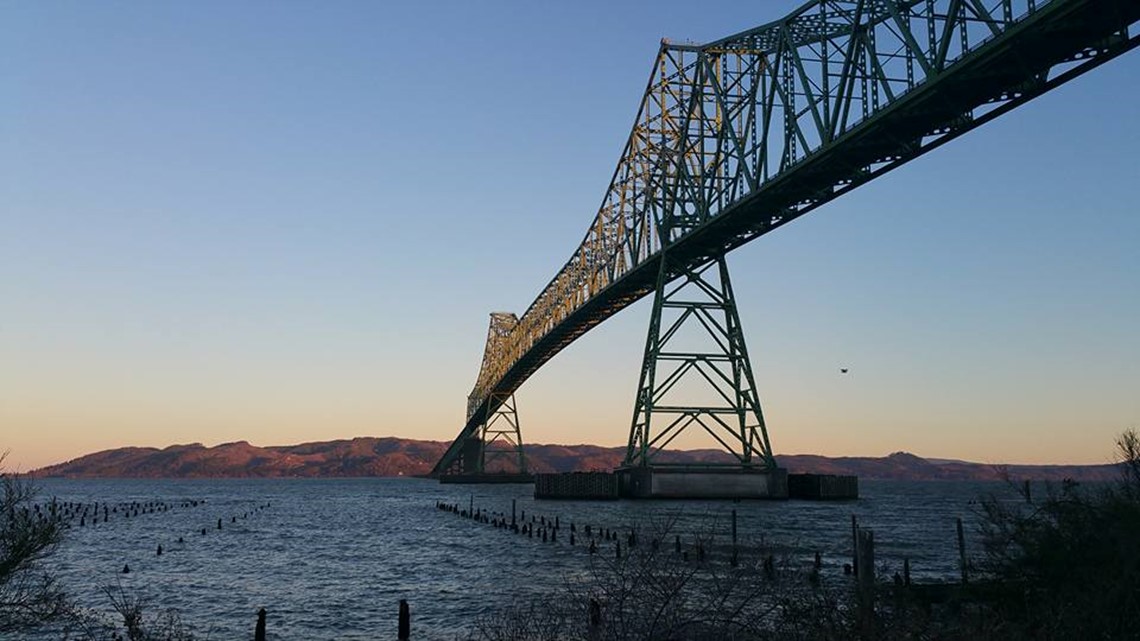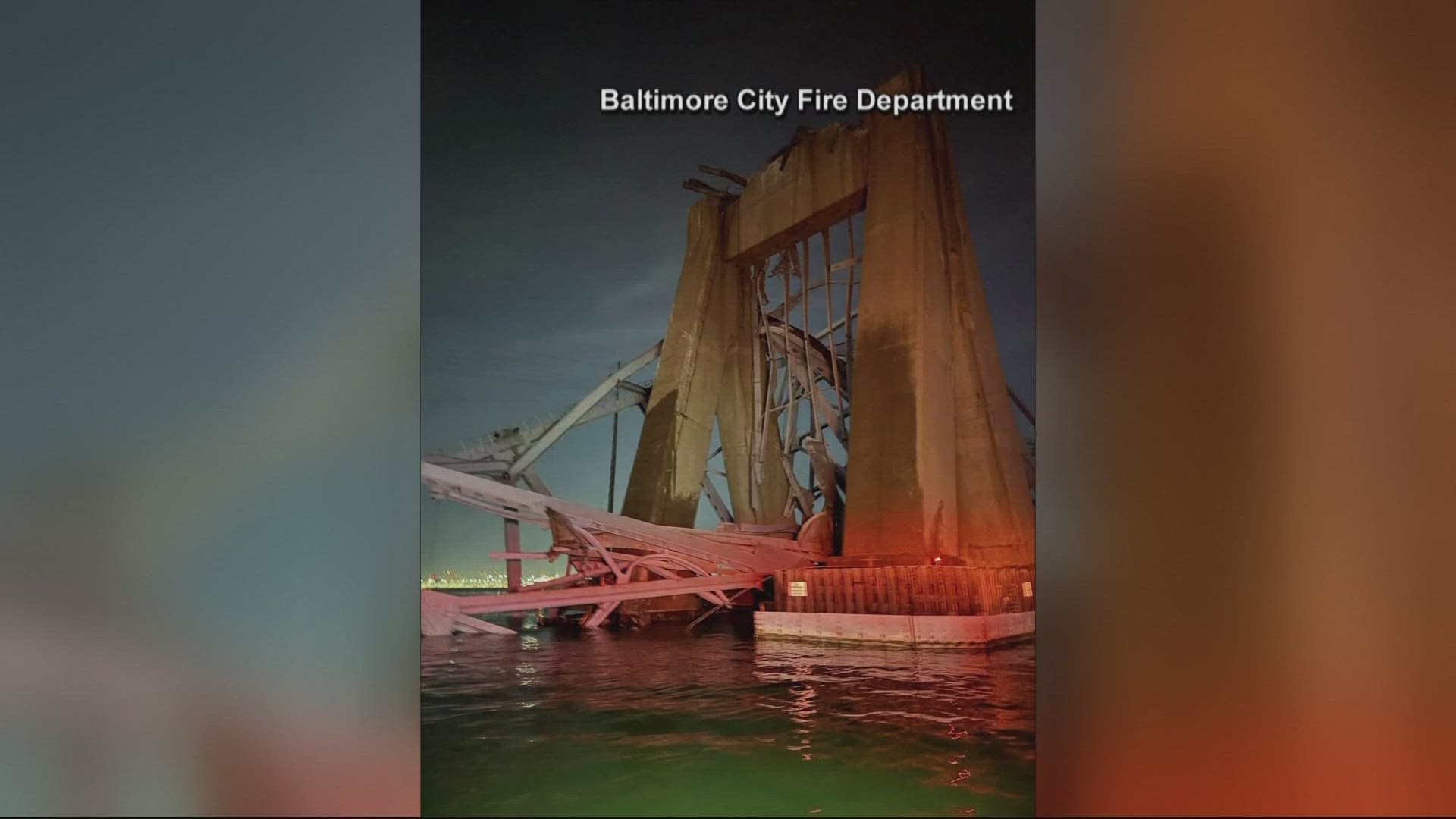PORTLAND, Ore. — The shocking early morning collapse of the Francis Scott Key Bridge in Baltimore grabbed headlines nationwide on Tuesday, with many people expressing alarm about the speed with which the entire central portion of the bridge went down after a drifting container ship crashed into one of the columns — and concern about whether other bridges are similarly vulnerable.
Oregon has never seen a major bridge collapse on the scale of Tuesday's Baltimore incident, although there have been a handful of cases in neighboring Washington, including the famous Tacoma Narrows Bridge disaster and the more recent Interstate 5 Skagit River bridge incident.
"We've had some ships hit some bridges here in Oregon, but nothing of the magnitude of what happened there in Maryland," Oregon Department of Transportation spokesman Don Hamilton said. "We've had only minor structural problems on the bridges here in Oregon."
Even so, he said, the agency is always eager to learn more about what happened during any sort of situation like the Key Bridge collapse.
"We're going to be watching this very closely in the days and weeks ahead to see what we can learn," he said. "Are there any issues that we could find out about this to see if we could improve our safety here in Oregon?"
The speed and scale of the Baltimore collapse was due in part to the Key Bridge's design. It was a continuous truss bridge, which means the entire central truss section functions as a single unit instead of a series of discrete spans between each column.
The design allows the columns to be spaced further apart, which is useful for bridges that need to cross big shipping channels. The central span of the Key Bridge was one of the longest in the world at 1,200 feet. But the downside is that losing one support column can throw off the balance of the entire truss, causing the whole section to collapse.
There are couple bridges across the Columbia River that use a similar design: the Astoria-Megler Bridge at the mouth of the Columbia and the Lewis and Clark Bridge in Longview. Both bridges use continuous trusses to span the main shipping channel, which is frequently used by large ships bound for ports at cities like Vancouver and Portland — although not as large as the ship involved in Tuesday's disaster, according to Hamilton.


"We get those big container ships going under that bridge all the time, and we're certainly watching that," he said. "We're certainly watching that with a fresh eye today to see what we can do. Are there any lessons of what happened there in Maryland that we can make our system safer?"
Other major Oregon bridges like the Interstate Bridge are lift spans, he added, which means they have crews on duty 24 hours a day to watch out for river traffic.
ODOT conducts regular maintenance and thorough inspections every two years on all of its bridges to make sure they stay safe, Hamilton said.
"I've seen them up there crawling up and down the bridges. They're doing 'fracture-critical' work, as they call it, up and down those bridges," he said. "We have to close the bridges for a week at night to make sure that work is done."
Multnomah County owns and maintains several of the Willamette River bridges in downtown Portland including the Broadway, Burnside, Morrison and Hawthorne bridges, but the county Transportation Division released a statement Tuesday noting that none of them share a similar design with the key bridge.
Container ships also don't travel far enough upriver to have to pass under any Portland bridges, the county added, although grain ships and U.S. Navy ships do occasionally visit downtown.

